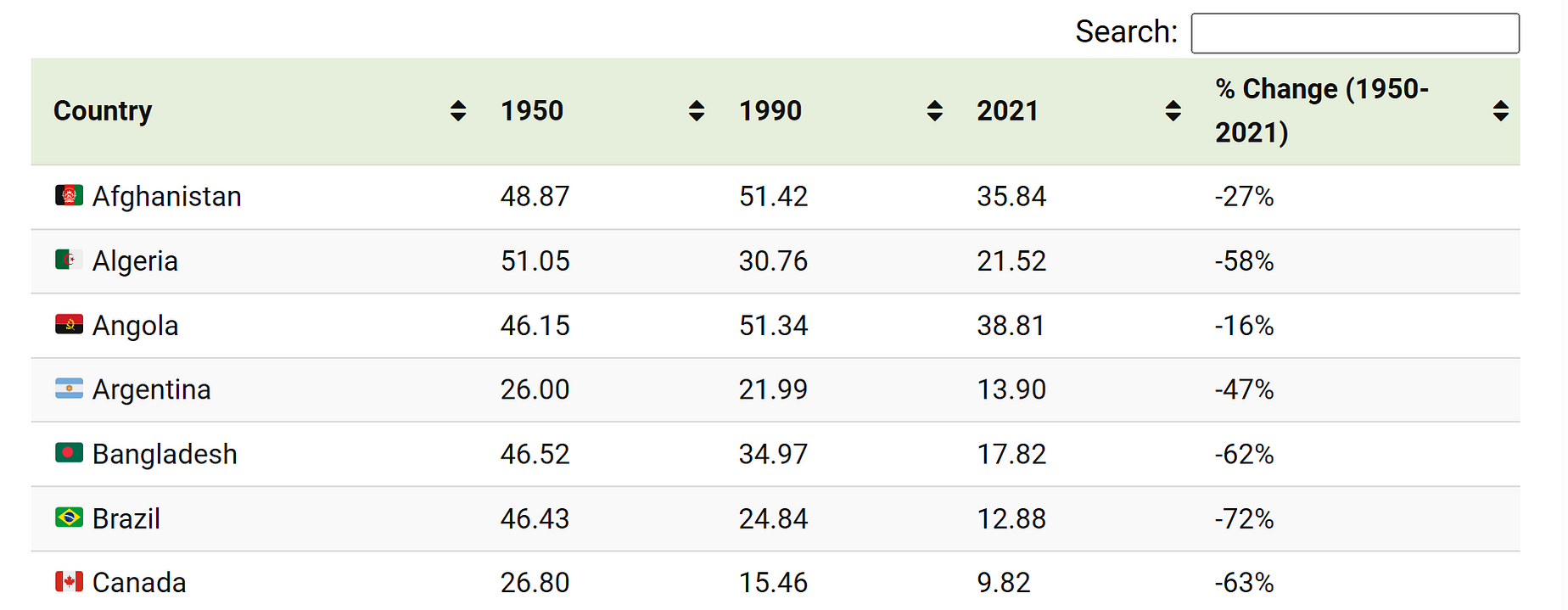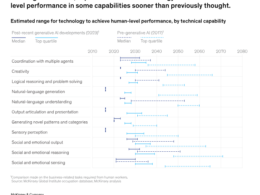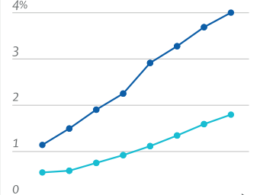health strategy institute (HSI)
multidisciplinary institute for health strategy
and digital health strategy
Joaquim Cardoso MSc
Chief Research and Strategy Officer (CRSO),
Editor in Chief and Senior Advisor
June 17, 2023
ONE PAGE SUMMARY
Birth rates across the world have been rapidly declining, leading to a gradually plateauing or even shrinking global population.
- The crude birth rate (CBR), which represents the number of live births per 1,000 individuals in a given population during a specific period, has been decreasing due to plummeting fertility rates.
- Factors influencing birth rates include population size, age structure, access to contraception, cultural norms, government policies, and socioeconomic conditions.
- Analysis of the 49 most populous countries from 1950 to 2021 reveals significant declines in birth rates, with some countries experiencing double-digit decreases.
Socio-economic development, expanded education and career opportunities for women, urbanization, and increased access to family planning services and contraceptives contribute to declining birth rates.
The consequences of declining birth rates include a rapidly aging population, which poses challenges for social welfare systems, healthcare, and pension schemes.
Labor shortages, skill gaps, reduced innovation, and decreased consumer demand are potential impacts on the labor market and economic productivity.
Statistics:
- China witnessed an 81% decrease in its birth rate from 41 births per 1,000 people in 1950 to 7.6 in 2021.
- South Korea experienced an 86% drop in its birth rate since 1950.
- On average, birth rates have halved in the 49 most populous countries over the past 70 years.
The declining birth rates raise concerns about the restructuring of the current growth model of development.
DEEP DIVE

The Rapid Decline of Global Birth Rates
Visual Capitalist
Pablo Alvarez
June 16, 2023
Article/Editing: Pallavi Rao
In 1798, British economist Thomas Malthus proposed a groundbreaking theory now known as the “Malthusian Trap” — suggesting that human population growth is exponential and thus would outpace the linear growth of resources such as food supply.
He worried that this runaway population growth would become unsustainable, eventually relying on sudden shock events — wars, disasters, famines — to reset the population to more sustainable levels. And over the next 200 years, the world population skyrocketed from 1 billion to 8 billion people on the planet.
However, as it turns out, no such shock events were required to turn the tide of population growth. Instead, it’s been rapidly declining birth rates across the world that seem to be leading to an unthinkable outcome for Malthus: a gradually plateauing or even shrinking global population.
In the visualization above, Pablo Alvarez has visualized the crude birth rate for the 49 most populous countries of the world in 2021, using data from the UN’s World Population Prospects 2022 to examine changes since 1950.
Understanding Birth Rates vs Fertility Rates
Birth rates are commonly measured using a metric called the “crude birth rate” (CBR), which represents the number of live births per 1,000 individuals in a given population during a specific period — usually one year.
The measured decline in CBR is also a result of plummeting fertility rates across the globe. Not to be confused with birth rates, fertility rates measure how many children a woman will have over the course of her lifetime.
While a country’s birth rate is directly impacted by the fertility rate, it also takes into account other factors: population size, age structure of the population, access to contraception, cultural norms, government policies, and socioeconomic conditions.
Birth Rates of the Most Populated Countries
Here’s a snapshot of the CBR for the 49 most populous countries of the world at different years from 1950 to 2021.

Every country on the list has seen a decline in birth rates in the last 70 years, with some declines more staggering than others. For example, China recorded 41 births per 1,000 people in 1950. By 2021, that number had fallen to just 7.6, a 81% decrease.
South Korea, the 29th most populous country in the world in 2021, saw an even larger 86% drop in its birth rate since 1950. In fact, almost every single country in this dataset has seen a double-digit fall in their birth rates over the past 70 years.
Only the Democratic Republic of Congo has seen a single-digit percentage decline between 1950 and 2021.
Why are Global Birth Rates Falling?
For the 49 most populated countries in 2021, birth rates have halved on average in the last 70 years:

But while the thought of a shrinking world population may seem worrisome, declining birth rates are generally thought of as a triumph of rapid socio-economic development.
As countries progress and living standards improve, there is a shift in societal norms and aspirations. For example, expanded education and career opportunities for women allow the pursuit of professional growth and personal goals, with some women choosing to delay starting a family or having smaller families.
Growing urbanization is another key driver of declining birth rates, characterized by smaller living spaces, increased focus on careers, and limited support networks. Another is the growing access to family planning services and contraceptives, particularly since the 1970s.
What are the Future Consequences?
The biggest consequence of declining birth rates — and one that is already being seen in many parts of the world — is a rapidly aging population.
With fewer children being born, the proportion of elderly individuals increases relative to the working-age population. This demographic imbalance poses challenges for social welfare systems, healthcare, and pension schemes.
Declining birth rates can also impact the labor market and economic productivity. A smaller workforce may lead to labor shortages, skill gaps, and reduced innovation. And shrinking populations reduce consumer demand, a cornerstone of the global economy, which may trigger a restructure of the current growth model of development.
Originally published at https://www.visualcapitalist.com on June 16, 2023.












